| Weight | 1 lbs |
|---|---|
| Dimensions | 9 × 5 × 2 in |
| host | mouse |
| isotype | IgG |
| clonality | monoclonal |
| concentration | concentrate, predilute |
| applications | IHC |
| reactivity | human |
| available size | 0.1 mL, 0.5 mL, 1 mL concentrated, 7 mL prediluted |
rabbit anti-PAX-2 monoclonal antibody (ZR224) 6319
Price range: $160.00 through $528.00
Antibody summary
- Rabbit monoclonal to PAX-2
- Suitable for: Immunohistochemistry (formalin-fixed, paraffin-embedded tissues)
- Reacts with: Human
- Isotype:IgG
- Control: Renal cell carcinoma
- Visualization: Nuclear
- 0.1, 0.5, 1.0 mL concentrated, 7 mL prediluted
rabbit anti-PAX-2 monoclonal antibody ZR224 6319
| target relevance |
|---|
| Protein names Paired box protein Pax-2 |
| Gene names PAX2,PAX2 |
| Mass 44706Da |
| Function FUNCTION: Transcription factor that may have a role in kidney cell differentiation (PubMed:24676634). Has a critical role in the development of the urogenital tract, the eyes, and the CNS. {ECO:0000269|PubMed:24676634}. |
| Subellular location SUBCELLULAR LOCATION: Nucleus. |
| Tissues TISSUE SPECIFICITY: Expressed in primitive cells of the kidney, ureter, eye, ear and central nervous system. |
| Structure SUBUNIT: Interacts with ELGN3; the interaction targets PAX2 for destruction. Interacts with TLE4. {ECO:0000269|PubMed:21575608, ECO:0000269|PubMed:24676634}. |
| Involvement in disease DISEASE: Papillorenal syndrome (PAPRS) [MIM:120330]: An autosomal dominant disorder characterized by both ocular and renal anomalies, but may also include vesicoureteral reflux, high frequency hearing loss, central nervous system anomalies, and/or genital anomalies. Eye anomalies in this disorder consist of a wide and sometimes excavated dysplastic optic disk with the emergence of the retinal vessels from the periphery of the disk, designated optic nerve coloboma or 'morning glory' anomaly. Associated findings may include a small corneal diameter, retinal coloboma, scleral staphyloma, optic nerve cyst, microphthalmia, and pigmentary macular dysplasia. The kidneys are small and abnormally formed (renal hypodysplasia), and have fewer than the normal number of glomeruli, which are enlarged (oligomeganephronia). These ocular and renal anomalies result in decreased visual acuity and retinal detachment, as well as hypertension, proteinuria, and renal insufficiency that frequently progresses to end-stage renal disease. {ECO:0000269|PubMed:11168927, ECO:0000269|PubMed:15652857, ECO:0000269|PubMed:19954729, ECO:0000269|PubMed:22213154, ECO:0000269|PubMed:24676634, ECO:0000269|PubMed:9760197}. Note=The disease is caused by variants affecting the gene represented in this entry.; DISEASE: Focal segmental glomerulosclerosis 7 (FSGS7) [MIM:616002]: A renal pathology defined by the presence of segmental sclerosis in glomeruli and resulting in proteinuria, reduced glomerular filtration rate and progressive decline in renal function. Renal insufficiency often progresses to end-stage renal disease, a highly morbid state requiring either dialysis therapy or kidney transplantation. {ECO:0000269|PubMed:24676634}. Note=The disease is caused by variants affecting the gene represented in this entry. |
| Target Relevance information above includes information from UniProt accession: Q02962 |
| The UniProt Consortium |
Data
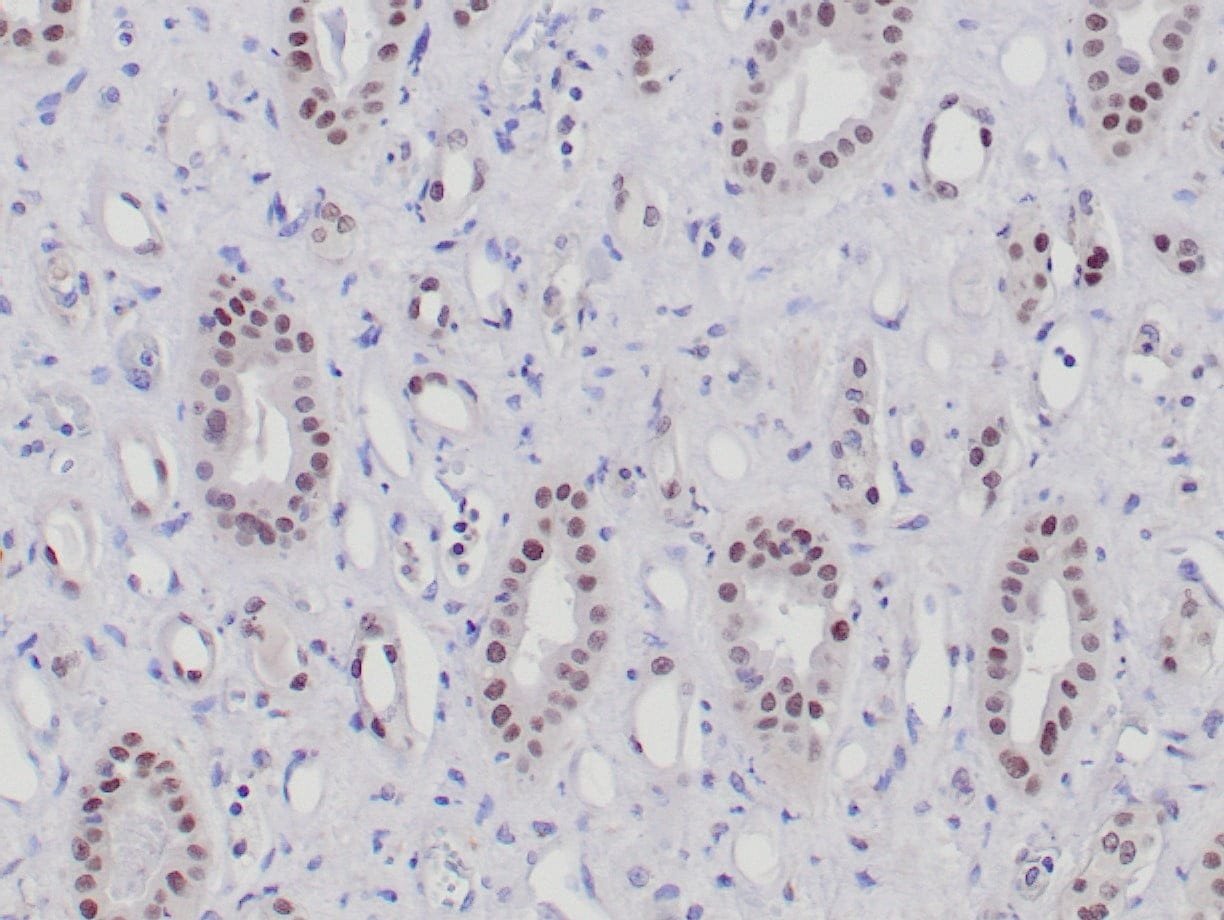 |
| Formalin-fixed, paraffin-embedded human normal kidney stained with anti-PAX-2 antibody using peroxidase-conjugate and DAB chromogen. Note nuclear staining of tubular cells |
Publications
| pmid | title | authors | citation |
|---|---|---|---|
| We haven't added any publications to our database yet. | |||
Protocols
| relevant to this product |
|---|
| IHC |
Documents
| # | SDS | Certificate | |
|---|---|---|---|
| Please enter your product and batch number here to retrieve product datasheet, SDS, and QC information. | |||
Only logged in customers who have purchased this product may leave a review.
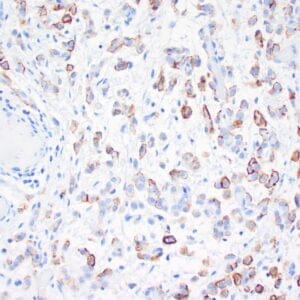
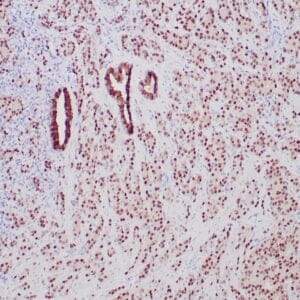
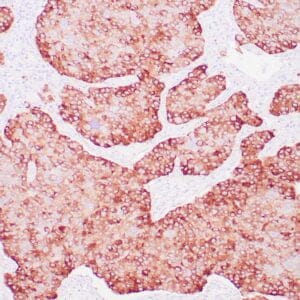
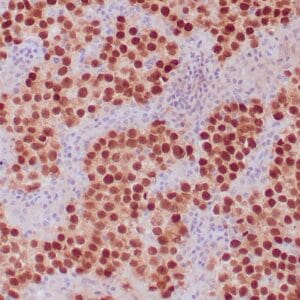

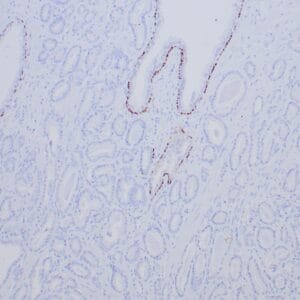

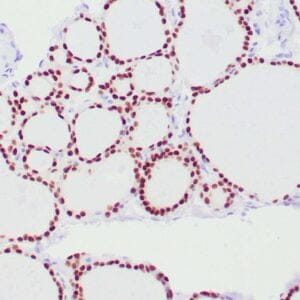
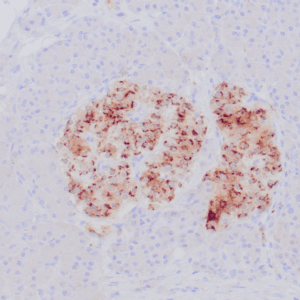
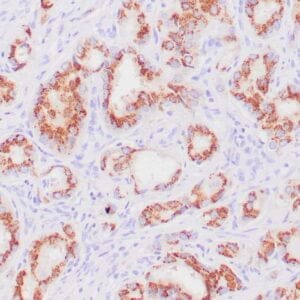
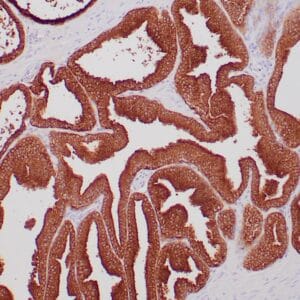
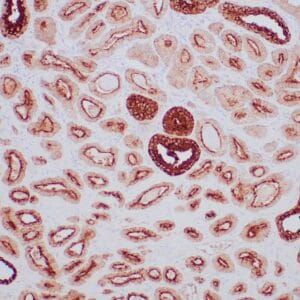
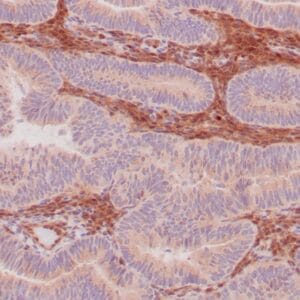
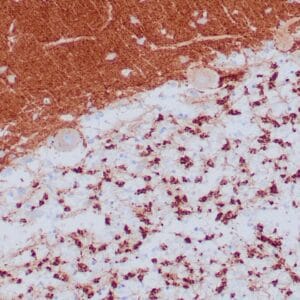
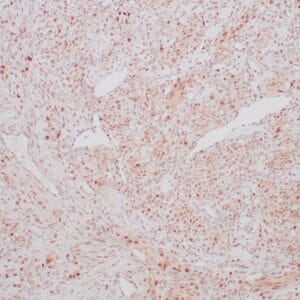
Reviews
There are no reviews yet.